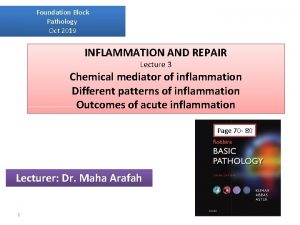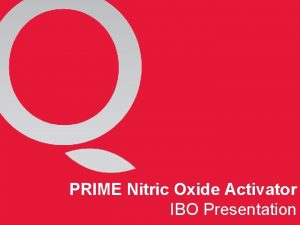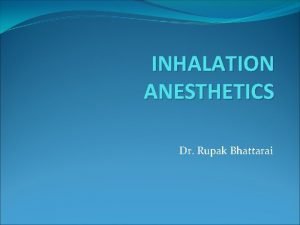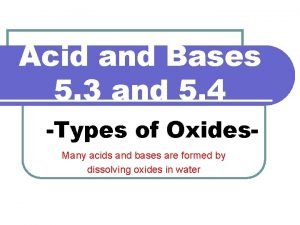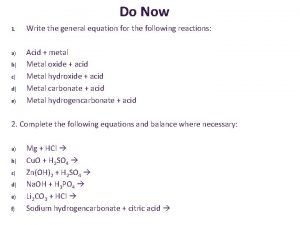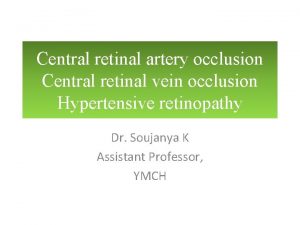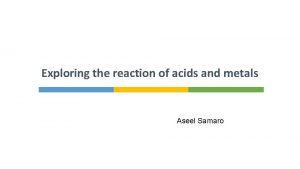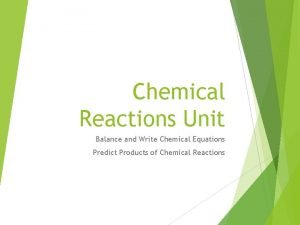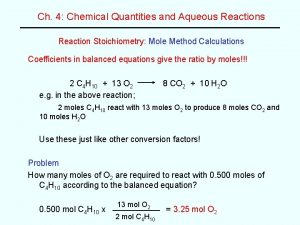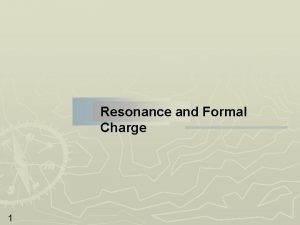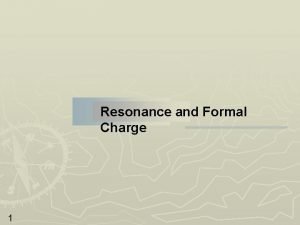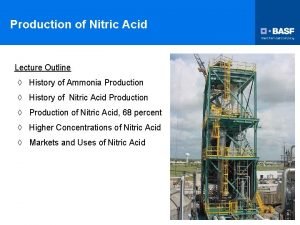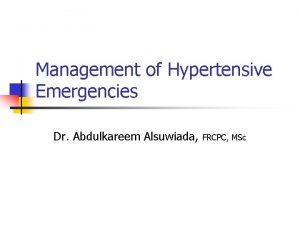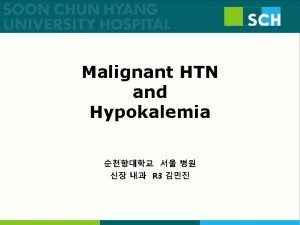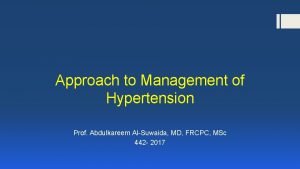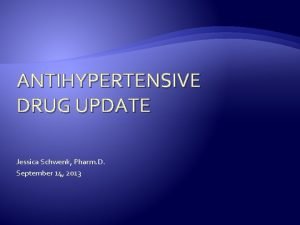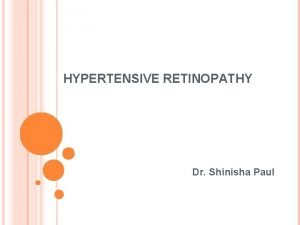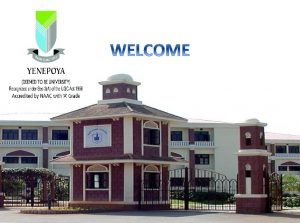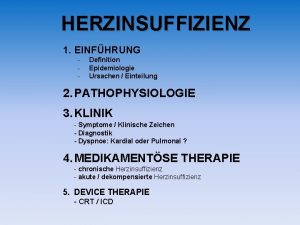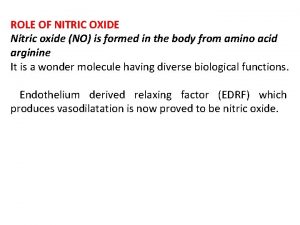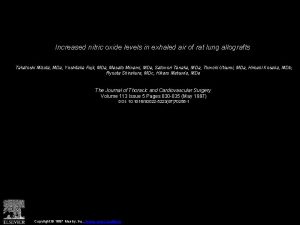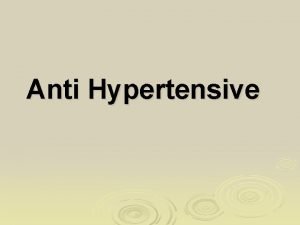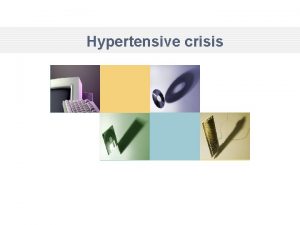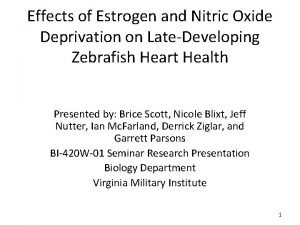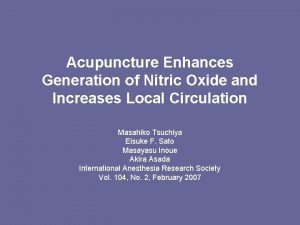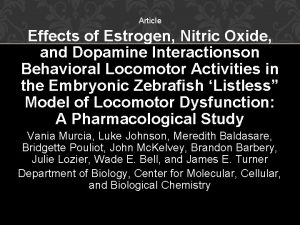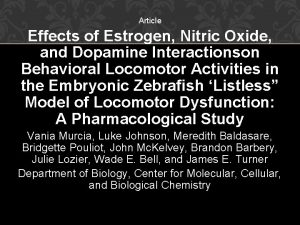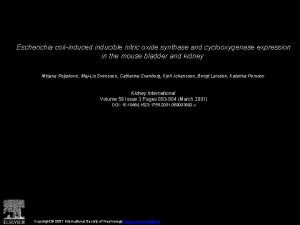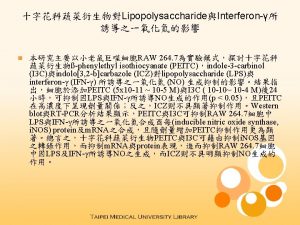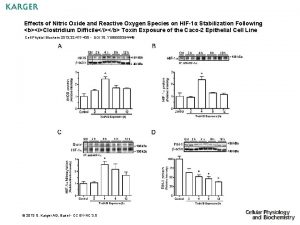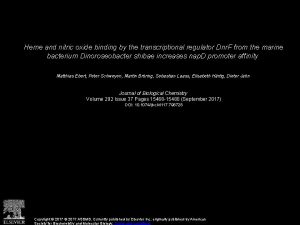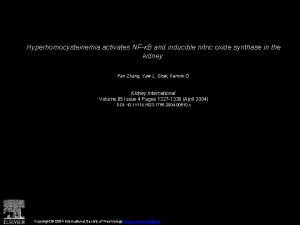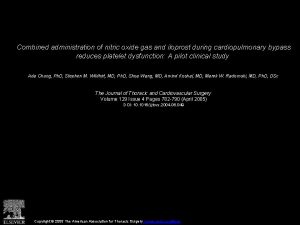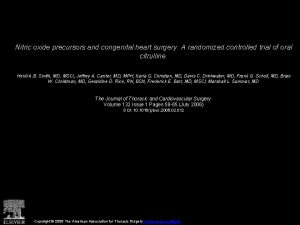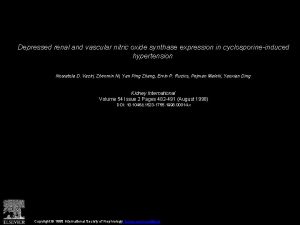L ARGININE AND NITRIC OXIDE LEVELS AMONG HYPERTENSIVE
























- Slides: 24

L ARGININE AND NITRIC OXIDE LEVELS AMONG HYPERTENSIVE PATIENTS IN SOKOTO, NORTH WESTERN NIGERIA By Erhabor Osaro (Ph. D) Faculty of Medical Laboratory Science Usmanu Danfodiyo University, Sokoto, Nigeria.

Introduction q Hypertension is defined as a transitory or sustained elevation of systemic arterial blood pressure to induce cardiovascular damage or other adverse consequences. q It is a chronic condition and a major public health problem that adversely affects health status of individuals, families and communities. q It is one of the most important preventable causes of premature morbidity and mortality in developed and developing countries. q Worldwide, more than nine million deaths or 16. 5% of all deaths are attributable directly or indirectly to the effects of hypertension. q More than a quarter of the global adult population (972 million) is currently hypertensive and almost three quarters (639 million) live in developing countries 2

Introduction q NO plays an important role in the maintenance of healthy blood pressure and, in turn, cardiovascular health. q It also plays an important role in the management of shock, heart, infections, lung, nervous system and cancer (Hess, 1999). q NO was originally recognized as a free radical signalling molecule q The vasodilatory properties of NO are well characterized and are clearly important in the setting of systemic hypertension. q Arginine is a dibasic amino acid. It is considered to be a dietary conditionally dispensable amino acid. q A large proportion of arginine is used in protein synthesis, approximately 5% in urea synthesis, and a small portion (< 5%) is utilised by the nitric oxide synthase (NOS) enzyme system for conversion to nitric oxide (NO). 3

Statement of the problem q The prevalence of hypertension in Nigeria has increased from 11. 2% in the 1990 s to 27. 9% in 2010 in a rural community in the Niger Delta and 22. 6% in 2009 among a suburban Christian community in South West Nigeria. q It is a major threat to the health of people in sub Saharan Africa and a major contributor to morbidity and mortality in the sub region q Hypertension is a highly prevalent factor for cardiovascular disease throughout the industrialized world. q It has become an increasingly common heath problem worldwide because of increasing longevity and prevalence of contributing factors such as obesity, physical inactivity an unhealthy diet. q Worldwide hypertension is estimated to cause 7. 1 million premature deaths and 4. 5% of the disease burden. q Hypertension plays a major etiological role in the development of cerebrovascular disease, cardiac and renal failure. q Treating hypertension has been associated with about a 40% reduction in the risk of stroke and about a 15% reduction in risk of myocardial infection. 4

Aim and Specific Objectives q Aim § The aim of this study is to determine the level of L arginine and nitric oxide among hypertensive patients in Sokoto, North Western, Nigeria. q Specific Objectives § To determine the L arginine and oxide levels level among hypertensive subjects and non hypertensive controls in Sokoto, Nigeria. § To determine the peculiar role of age, gender, ethnicity and marital status on L arginine and nitric oxide levels among hypertensive subjects and non hypertensive controls in Sokoto, Nigeria. § To determine the relationship between blood pressure levels and L arginine and nitric oxide levels among hypertensive subjects in Sokoto, Nigeria. 5

Materials and Method q Study Site § The study was conducted in the Medicine Department of Specialist Hospital Sokoto and samples was analyzed in the Department of Haematology and Blood Transfusion Science in the Faculty of Medical Laboratory Science of Usmanu Danfodio University Sokoto (UDUS). § The Department and the collaborating Specialist Hospital Sokoto has enabling environment (human and material endowment) to carry out this study. Sokoto State is located in the extreme North Western part of Nigeria, near to the confluence of the Sokoto River and the Rima River. § Report from the 2007 National Population Commission indicated that the state had a population of 3. 6 million (NPC, 6 2007).

Study Population q The study population comprised of hypertensive patients men and women attending the general outpatient clinic of Specialist Hospital Sokoto and non hypertensive healthy men and women recruited from among student, staff of Usmanu Danfodiyo University Sokoto (UDUS) and Specialist Hospital Sokoto, Nigeria. 7

Study Design and Eligibility Criteria q Study Design § This case control study involved 140 consecutively recruited participants made up of 90 hypertensive patients (subjects) presenting to the Medical of Specialist Hospital, Sokoto, Nigeria and 50 healthy, age and gender matched non hypertensive individuals (controls) recruited from among staff of Usmanu Danfodiyo University Sokoto (UDUS) and Specialist Hospital Sokoto, Nigeria. q Inclusion Criteria § The study include all consenting, consecutively recruited legal adults (≥ 18 years) and confirmed hypertensive patients (by a qualified physician) attending Medical Clinic in Specialist Hospital Sokoto. Exclusion Criteria 8 The following persons who did not meet the inclusion criteria; non

Statistical Analysis and Ethical Consideration Statistical Analysis § Socio demographic and blood pressure data collected were collected using a self administered questionnaire. Data collected included age, gender, marital status, ethnic group and blood pressure level. § The data collected was recorded on an Excel spread sheet and later subjected to statistical analysis using statistical software (SPSS Version 20. 0). Results were expressed as a mean and standard deviation. Differences in values based on socio demographic variables of subjects was determined and compared statistically. A p value of ≤ 0. 05 was considered as significant in all statistical comparisons. q Ethical Approval § Ethical clearance was obtained from the ethical committee of Specialist Hospital Sokoto. The study was carried out in accordance with the Code of Ethics for Biomedical Research involving human sub jects. q Informed Consent § Written informed consent was obtained from all hypertensive patients 9 and non hypertensive individuals participating in the study. Socio

Methods q. L arginine assay was carried out using a competitive enzyme linked immunoassay. q. NO was determined using an enzymatic conversion of nitrate to nitrite by the enzyme Nitrate Reductase, followed by the Griess reaction that absorbs visible light at 540 nm. 10

Results q Subjects for this case control study included 90 consecutively recruited hypertensive patients aged 20 89 years with mean age 43. 76 ± 14. 04 years. q The mean values of L arginine level was significantly lower among 90 hypertensive subjects compared to those of the 50 non hypertensive controls (p = 0. 04). q There was no difference in the nitric oxide level among the hypertensive subjects and non hypertensive controls (p = 0. 09). q Table 1: L arginine and nitric oxide levels among hypertensive subjects and non hypertensive controls Non-Hypertensive controls Parameter Hypertensive Subjects t-value p-value L-arginine 174. 33 ± 78. 31 237. 82 ± 261. 16 -2. 11 0. 04 Oxide 473. 47 ± 163. 08 554. 82 ± 396. 44 -1. 71 0. 09 (µmol/L) Nitric (µmol/L) 11

The effect of gender on the level of L arginine and Nitric Oxide levels q There was no gender –related difference in the mean L arginine and nitric oxide levels among the hypertensive subjects (p = 0. 87, 0. 22). q Table 2: The effect of gender on the level of L arginine and NO Parameter Male (n= 62 ) Female (n=28) t-value p-value 176. 58 ± 84. 53 173. 31 ± 84. 53 -160 0. 87 441. 35 ± 155. 63 487. 98 ± 165. 52 -1. 23 0. 22 levels L-arginine (µmol/L) Nitric (µmol/L) 12 Oxide

The effect age on the level of L arginine and Nitric Oxide levels among hypertensive subjects q There was no age related differences in the mean L arginine and nitric oxide levels among hypertensive subjects (p = 0. 23 and p = 0. 47) respectively. q Table 3 shows the effect age on the level of L arginine and Nitric Oxide levels among hypertensive subjects. Parameter Age Groups L-arginine t-value p-value 20 -39 Years 40 -89 Years (n= 47) (n= 43) 164. 83 ± 79. 70 184. 71 ± 76. 32 -1. 23 0. 23 461. 56 ± 169. 83 486. 49 ± 156. 32 -725 0. 47 (µmol/L) Nitric (µmol/L) 13 Oxide

The effect of marital status on L arginine and nitric oxide among hypertensive patients q The L arginine level was significantly higher among married hypertensive subjects compared to single or unmarried subjects (p = 0. 03). q There was no difference in the nitric oxide level based on the marital status of the hypertensive subject (p = 0. 81). q Table 4 shows the effect of marital status on L arginine and nitric oxide among hypertensive patients. Parameter Marital Status Married L-arginine t-value p-value Single 181. 71 ± 78. 17 130. 62 ± 65. 99 2. 23 0. 03 474. 30 ± 170. 83 468. 57 ± 111. 31 0. 13 0. 81 (µmol/L) Nitric (µmol/L) 14 Oxide

The effect of ethnicity on the L arginine and nitric oxide among hypertensive patients q There was no differences in the L arginine and nitric oxide levels based on ethnicity (p = 0. 57 and 0. 25) respectively. q Table 5 shows the effect of ethnicity on the L arginine and nitric oxide among hypertensive patients. Parameters Ethnic Group L-arginine t-value p-value Hausa Fulani (n= 67) (n= 23) 177. 12 ± 79. 73 166. 21 ± 75. 11 0. 57 484. 55 ± 163. 19 441. 19 ± 161. 96 1. 17 0. 25 (µmol/L) Nitric (µmol/L) 15 Oxide

The effect of blood pressure on L arginine and nitric oxide level among hypertensive patient q There was no difference in the mean L arginine level on the blood pressure level (p = 0. 06). q The mean nitric oxide level was significantly higher among hypertensive subjects with mild blood pressure compared to those with high blood pressure (p = 0. 01). q Table 6 shows the relationship the effect of blood pressure on L arginine and nitric oxide level among hypertensive patient. Parameter Blood Pressure Level Parameter L-arginine Blood Pressure Level t-value p-value High BP Mild BP (n=39) (n=51 156. 93 ± 76. 31 187. 63 ± 77. 93 -1. 93 0. 06 400. 76 ± 156. 56 529. 08 ± 146. 40 -4. 17 0. 01 (µmol/L) Nitric 16 (µmol/L) Oxide

Discussion q The result obtained from this study showed that the mean L arginine level was significantly lower (p= 0. 04) among the hypertensive subjects compared to the non hypertensive controls. Our finding is consistent with a previous report (Adriana et al. , 2013). q There was no gender related effect on the L arginine level among hypertensive subjects (p= 0. 87). Incidence of uncontrolled hypertension has been shown to be greater in men than in women (Anastos et al. , 1991) and there is significant evidence that androgens (testosterone, play an important role in gender associated differences in blood pressure regulation (Reckelhoff et al. , 1991). q There was no age related effect on the L arginine level among 17 hypertensive subjects (p= 0. 23). Previous report indicates that

Results q The L arginine level was significantly higher (p= 0. 03) among married hypertensive subjects compared to those who were single. Less psychosocial distress and better access to dietary sources of L arginine including meat, fish, soy, beans, lentils, whole grains and nuts among married hypertensive subjects may play a role (Higashi et al. , 1996). q There was no ethnicity related effect of the L arginine levels among hypertensive subjects (p= 0. 57). Previous report indicates that African Americans and Africans (are disproportionately affected by hypertension (Lapu Bula and Ofili, 2007). q The L arginine level was lower (p= 0. 05) among hypertensive patients with markedly raised blood pressure compared to those with mildly raised normal blood pressure. Previous reports indicates thatl arginine have antioxidant activities which may help to regulate redox sensitive proteins and may lower blood pressure (Jabecka et al. , 2012). q Nitric Oxide level was lower among hypertensive subjects compared to non hypertensive controls (p= 0. 09). Previous report which indicated that low NO bioavailability is central to the development and maintenance of hypertension 18 and to related endothelial dysfunction and target organ damage (Rajapakae

Discussion q There was no age, marital status and gender related difference in the production of NO among hypertensive subjects. Previous report indicates that ovarian hormones (estrogens) could contribute to the low risk of cardiovascular events in women of reproductive age (Chowienczyk et al. , 1994). q There was no statistically significant differences in the nitric oxide levels of hypertensive patients based on ethnicity (p= 0 0. 25). Previous report indicates a 2 to 3 fold racial difference in certain cardiovascular diseases associated with dysfunctional nitric oxide–mediated vasodilation (Meta Greenwood and Chen, 2008). q The nitric oxide level was significantly lower among 19 hypertensive subjects with high blood pressure compared to

Conclusion and Recommendation q L arginine is lower among hypertensive patient compared to non hypertensive controls. The level L arginine was lower among unmarried hypertensive patient compared to married hypertensive patient. L arginineand nitric oxide is lower among hypertensive patient with markedly raised blood pressure compared to those with mildly raised blood pressure level. q We recommend that L arginine supplements be prescribed routinely to hypertensive patient as a prophylactic measure. 20

Acknowledgement q I wish to acknowledge the following collaborators § Osaro Erhabor § Adamu Hafizu Chiroma § Isaac Zama § Abdulrahaman Y § Knox Van Dyke § Liman H. M § Egenti Nonye § Echonwere Beauty § Ian Gobo Miebaka 21

References q Adriana, M. L. , Pimentel, N. R. , Pereira, C. A. , Costa, G. E. , Mann, V. S. C. , Cordeiro, R. S. , de Moura, T. M. C. , Brunini, A. C. M. , ngela C. R. (2013) L arginine nitric oxide pathway and oxidative stress in plasma and platelets of patients with pre eclampsia. Hypertension, Research, 36, 783 788. q Anastos, K. , Charney, P. , Cohen, E. , Jones, C. Y. , Marte, C. , Swiderski, D. M. , Wheat, M. E. , Williams, S. (1991) Hypertension in women: what is really known? The Women’s Caucus, Working Group on Women’s Health of the Society of General Internal Medicine. Ann Intern Med, 115, 287– 293. q Chowienczyk, P. J. , Cockcroft, J. R. , Brett, S. , Ritter, J. M. (1994). Sex differences in endothelial function in normal and hypercholesterolemic subjects. Lancet; 344: 305– 306. q Higashi, Y. , Oshima, T. , Watanabe, M. , Matsuura, H. , Kajiyama, G. (1996) Renal response to L arginine in salt sensitive patients with essential hypertension. Hypertension, 27, 643– 648. 22

References q Jabecka, A. , Ast, J. , Bodgaski, P. , et al. , (2012) Oral L arginine supplementation in patients with mild arterial hypertension and its effect on plasma level of asymmetric dimethylarginine, L citruline, L arginine and antioxidant status. European Review in Medical Pharmacological Sciences, 16(12), 1665 1674. q Lapu Bula, R. , Ofili, E. (2007) From hypertension to heart failure: role of nitric oxide mediated endothelial dysfunction and emerging insights from myocardial contrast echocardiography. American Journal of Cardiology, 99, 7 D– 14 D. q Meta Greenwood, E. , Chen, D. (2008). Racial Differences in Nitric Oxide Dependent Vasorelaxation. Reproductive Science; 15(1): 9 25. q Moncada, S. , Higgs, E. A. (2006). The discovery of nitric oxide and its role in vascular biology. British Journal of Pharmacology; 147(1): S 193–S 201. q National Population Commission (NPC). (2007). National Census Figures, Abuja, Nigeria. q Reckelhoff, J. F. , Zhang, H. , Srivastava, K. , Granger, J. P. (1999) Gender differences in hypertension in spontaneously hypertensive rats: role of androgens androgen receptor. 23 Hypertension, 34, 920– 923.

24
 Zinc oxide + nitric acid → zinc nitrate + water
Zinc oxide + nitric acid → zinc nitrate + water Epoprotenol
Epoprotenol Bradykinin nitric oxide
Bradykinin nitric oxide Prime nitric oxide activator
Prime nitric oxide activator Nitric oxide properties
Nitric oxide properties Base oxides examples
Base oxides examples Nitric acid react with calcium carbonate
Nitric acid react with calcium carbonate Salu bonnet and gunn sign
Salu bonnet and gunn sign Magnesium reacting with nitric acid equation
Magnesium reacting with nitric acid equation Calcium + nitric acid balanced equation
Calcium + nitric acid balanced equation Kno3 oxidation number of n
Kno3 oxidation number of n Formal charges of nco-
Formal charges of nco- How to determine formal charge
How to determine formal charge Nitric acid formal charge
Nitric acid formal charge What is a do
What is a do Nitric acid production plant
Nitric acid production plant Htn emergency vs urgency
Htn emergency vs urgency Hypertensive encephalopathy
Hypertensive encephalopathy Hypertensive urgency
Hypertensive urgency Htn urgency vs emergency
Htn urgency vs emergency Hypertensive crisis classification
Hypertensive crisis classification Keith wagner grading
Keith wagner grading Bav brutale
Bav brutale Nursing interventions for thyroid storm
Nursing interventions for thyroid storm Hypertensive kardiopathie definition
Hypertensive kardiopathie definition


